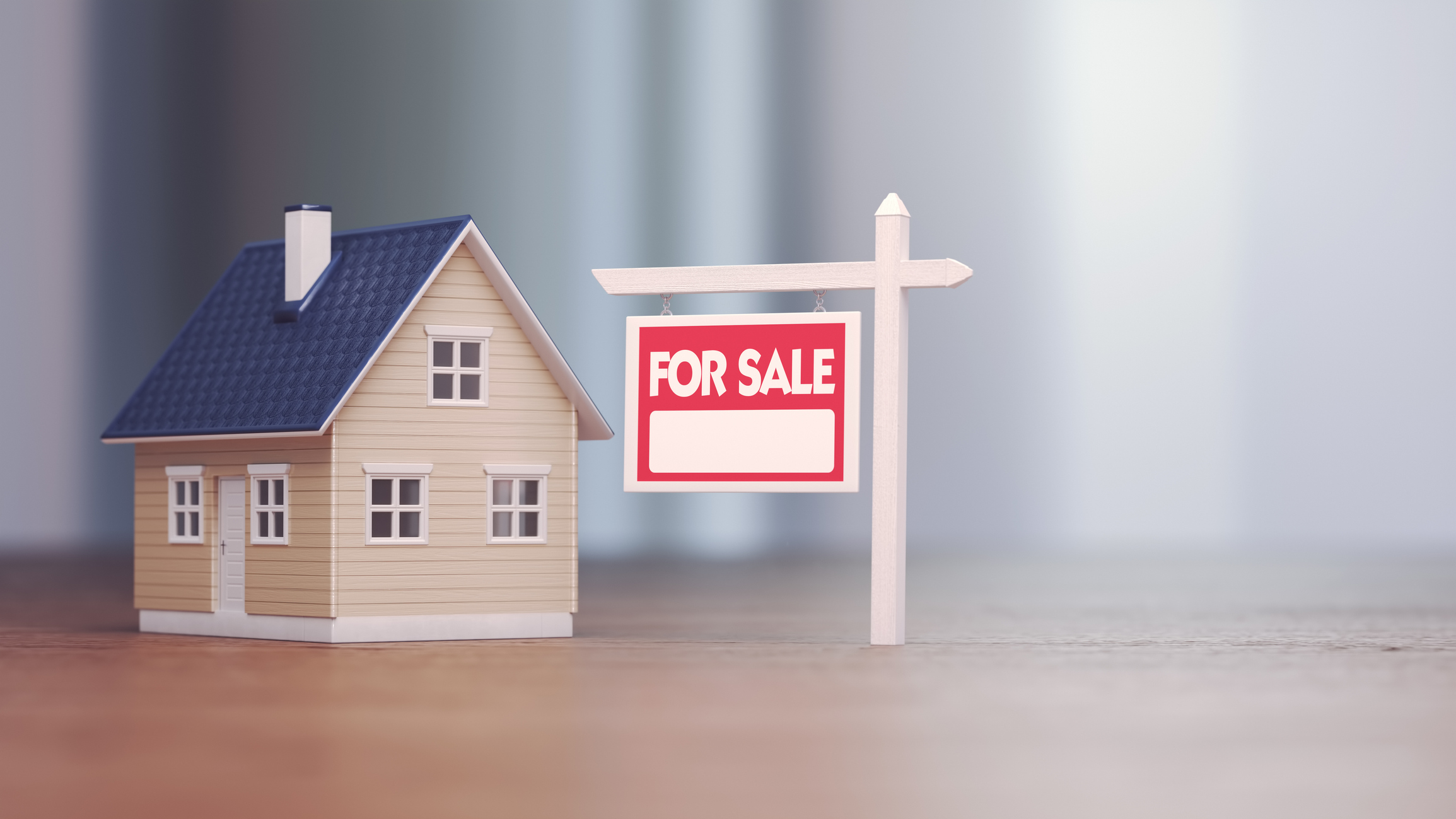Find the Best 30-Year Mortgage Rates Today
Stay up to date with the latest 30-year mortgage rates, expert insights and tips for homebuyers.

Mortgage rates may fluctuate by only fractions of a percent, but those small differences can translate into thousands in long-term savings. Understanding what influences these rates can help you lock in a better deal.
While the Fed does not directly control mortgage rates, its actions influence them indirectly by affecting the broader economic environment and lender borrowing costs. When the Fed signals potential rate cuts or hikes, mortgage rates often respond accordingly, as lenders adjust to expectations of future inflation and economic growth.
At its most recent October meeting, the Federal Reserve cut the federal funds rate by 25 basis points, bringing the target range to 3.75% to 4.00%.
From just $107.88 $24.99 for Kiplinger Personal Finance
Become a smarter, better informed investor. Subscribe from just $107.88 $24.99, plus get up to 4 Special Issues

Sign up for Kiplinger’s Free Newsletters
Profit and prosper with the best of expert advice on investing, taxes, retirement, personal finance and more - straight to your e-mail.
Profit and prosper with the best of expert advice - straight to your e-mail.
Mortgage rates, which hovered in the high-6% to 7% range throughout most of 2024, experienced a brief decline before rising again amid economic tensions. As of October, the average rate on a 30-year fixed mortgage is 6.17%, according to Freddie Mac.
While the Federal Reserve has only just begun to ease rates, many experts anticipate further reductions in 2025. A decline in mortgage rates could encourage more homeowners to sell, increasing the housing supply and potentially helping to unlock the housing market.
With these shifts on the horizon, it’s important to know where to find the best mortgage rate for your situation.
30-year mortgage rates
If you're looking for the lowest mortgage rate, you should shop around. The financial institution you usually work with may not have the best rate available, so you should look at multiple options before deciding where to go. Mortgage rates have a massive impact on your monthly cash flow and what you end up paying overall.
For example, let’s look at a home with a sale price of $420,000.
Assume you put down 20% ($84,000) and get a $336,000 mortgage. At 6.35%, you’d be paying $2,090.71 on your monthly mortgage payment. But at 6%, you’d be paying $2,014.49 monthly — saving about $914.67 each year.
To put those savings into perspective, here’s how different interest rates can affect your monthly payment, total interest and overall cost over a 30-year loan.
Interest Rate | Monthly Payment | Annual Payment | Total Interest (30 yrs) | Total Cost (Principal + Interest) |
7.00% | $2,235.42 | $26,825.00 | $468,749.90 | $804,749.90 |
6.75% | $2,179.29 | $26,151.48 | $448,544.26 | $784,544.26 |
6.50% | $2,123.75 | $25,484.98 | $428,549.48 | $764,549.48 |
6.25% | $2,068.81 | $24,825.72 | $408,771.53 | $744,771.53 |
6.00% | $2,014.49 | $24,173.88 | $389,216.32 | $725,216.32 |
These calculations are for illustrative purposes only and assume a 20% down payment on a $420,000 home. Monthly and total costs reflect principal and interest payments only and do not include property taxes, homeowners' insurance, HOA fees or other costs of homeownership.
Curious about today's rates? Explore and compare some of today's best mortgage offers with the tool below, powered by Bankrate:
If you already have a mortgage, remember that you can refinance. This was a plan for many people who bought while interest rates were high. The expectation was that when rates went down, they'd be able to refinance and get a better deal.
Refinance rates haven't gone down enough to make this an entirely attractive prospect yet, but the expectation is that in the future they will. Read more on how refinancing a mortgage works and what it costs.
Explore and compare the latest refinancing options with the tool below, powered by Bankrate:
Four ways to get a lower mortgage rate
Market conditions influence mortgage rates, but you can take several proactive steps to improve your chances of securing a lower interest rate. Here are four key strategies to help you save on your mortgage.
Raise your credit score
One of the best and most effective ways to save on your mortgage is to raise your credit score, the biggest factor in determining your mortgage rate. Upping your FICO credit score, which ranges from 300 to 850, by just 20 points can save you hundreds of dollars by lowering your mortgage.
So, while you’ll likely need at least a 620 FICO score in order to qualify for a mortgage at any rate, you'll need a higher score to get approved for the best rates. Raising your credit score can be done in a number of ways, including making card payments on time and keeping credit card balances low.
Increase your down payment
In order to get the best rates on a conventional mortgage loan from Fannie Mae or Freddie Mac, you'll need to make at least a 20% down payment. In fact, the bigger your down payment is, the better your rate will likely be. You'll have to repay less principal and less interest over the life of the loan.
Get multiple quotes
Different lenders may offer different rates. Because of this, it's important to get multiple quotes to ensure you're getting the lowest interest rates available to you.
Consider an adjustable-rate mortgage (ARM)
If you know you're going to sell your home in the near future, opting for an ARM could be a good decision. For example, if you're going to sell your home in four years, choosing a 5-year ARM could save you a lot in interest.
You'll be able to take advantage of the lower interest rates associated with this kind of mortgage, and you won't have to worry about your rate changing before you sell.
Looking for the best 30-year mortgage rate can save you thousands over the life of your loan. By boosting your credit score, making a larger down payment and shopping around for quotes, you can put yourself in a better position to get a lower rate.
Good luck, and happy hunting.
Related Content
Profit and prosper with the best of Kiplinger's advice on investing, taxes, retirement, personal finance and much more. Delivered daily. Enter your email in the box and click Sign Me Up.

Carla Ayers joined Kiplinger in 2024 as the eCommerce and Personal Finance Editor. Her professional background spans both commercial and residential real estate, enriching her writing with firsthand industry insights.
Carla has worked as a personal finance and real estate writer for Rocket Mortgage, Inman and other industry publications.
She is passionate about making complex real estate and financial topics accessible to all readers. Dedicated to transparency and clarity, her ultimate goal is to help her audience make informed and confident decisions in their financial pursuits.
-
 December Fed Meeting: Live Updates and Commentary
December Fed Meeting: Live Updates and CommentaryThe December Fed meeting is one of the last key economic events of 2025, with Wall Street closely watching what Chair Powell & Co. will do about interest rates.
-
 This Is Why Investors Shouldn't Romanticize Bitcoin
This Is Why Investors Shouldn't Romanticize BitcoinInvestors should treat bitcoin as the high-risk asset it is. A look at the data indicates a small portfolio allocation for most investors would be the safest.
-
 I'm a Federal Benefits Pro: I Answer These 2 Questions a Lot
I'm a Federal Benefits Pro: I Answer These 2 Questions a LotMany federal employees ask about rolling a TSP into an IRA and parsing options for survivor benefits, both especially critical topics.
-
 How Much Would a $50,000 HELOC Cost Per Month?
How Much Would a $50,000 HELOC Cost Per Month?Thinking about tapping your home’s equity? Here’s what a $50,000 HELOC might cost you each month based on current rates.
-
 Should You Tap Your Home Equity Before 2026?
Should You Tap Your Home Equity Before 2026?As borrowing rates and tax law shifts converge, here's what homeowners need to know before pulling equity out of their home.
-
 What to Know About Portable Mortgages
What to Know About Portable MortgagesA closer look at how portable mortgages would work, who might benefit and why the concept is gaining attention amid high rates and limited supply.
-
 A New Kind of HELOC Lets Homeowners Fund Remodels on Their Terms
A New Kind of HELOC Lets Homeowners Fund Remodels on Their TermsFinance home upgrades gradually, using the equity you already have.
-
 Selling a Haunted House? What You Have to Tell Buyers (and What You Don’t)
Selling a Haunted House? What You Have to Tell Buyers (and What You Don’t)You don’t need ghosts to spook buyers, sometimes a home’s past is enough. Here’s what sellers should know about disclosure laws, pricing and perception when a property has a haunted history.
-
 A Vacation Home Sounds Dreamy, But Is It the Right Move for You?
A Vacation Home Sounds Dreamy, But Is It the Right Move for You?A vacation home can be a relaxing getaway or a financial burden. Learn the pros and cons of owning a second home and how to decide if it fits your goals.
-
 Planning a Major Home Renovation? 3 Smart Ways to Finance It
Planning a Major Home Renovation? 3 Smart Ways to Finance ItFrom HELOCs to personal loans, here’s how to pay for a major home renovation without draining your savings.
-
 I Made Some Mistakes Buying My First Home. Here's How I'm Making Sure It Doesn't Happen Again
I Made Some Mistakes Buying My First Home. Here's How I'm Making Sure It Doesn't Happen AgainHome Buying Buying a home can be a complicated process. I'll show you some common mistakes we encountered and provide expert tips to help you avoid these.